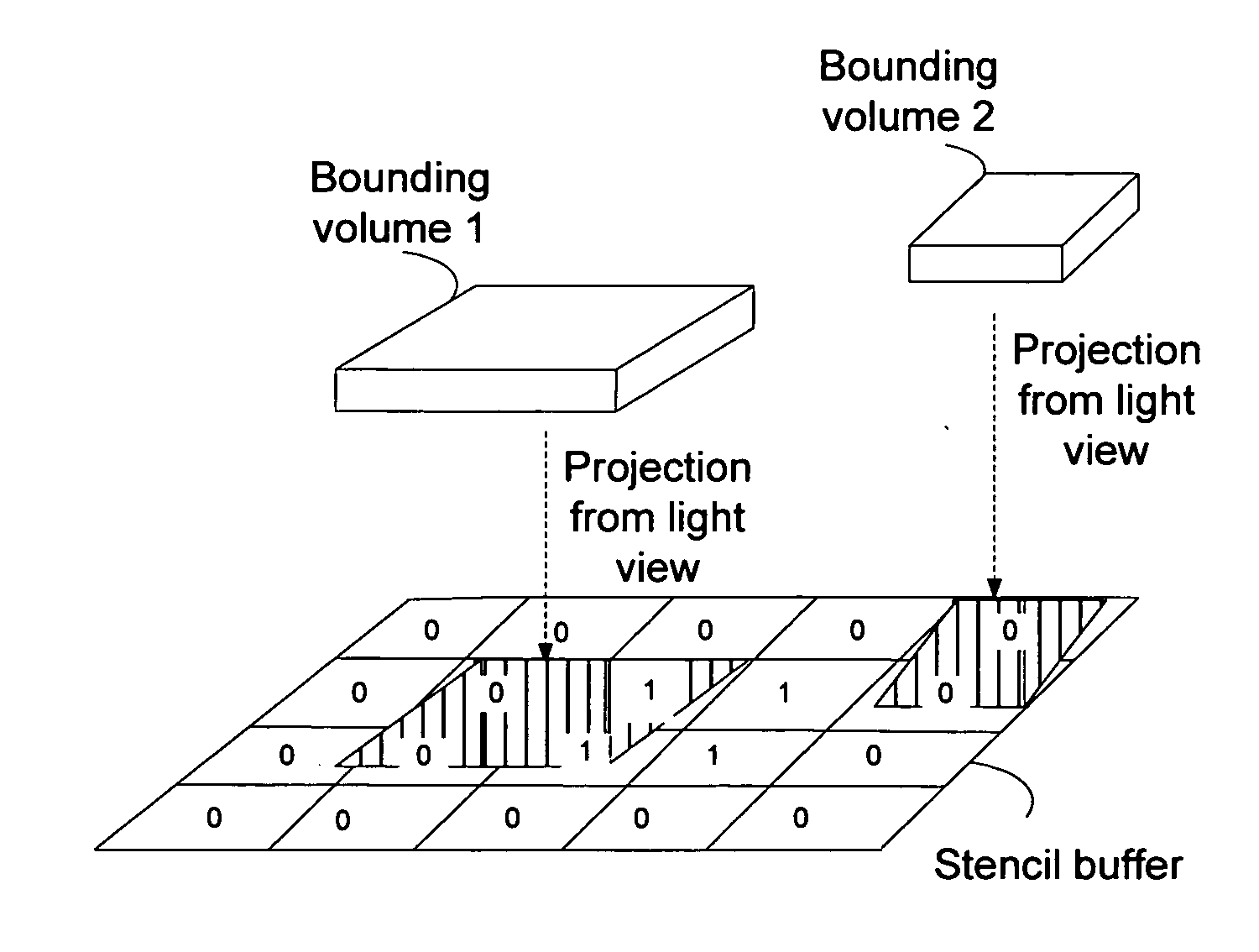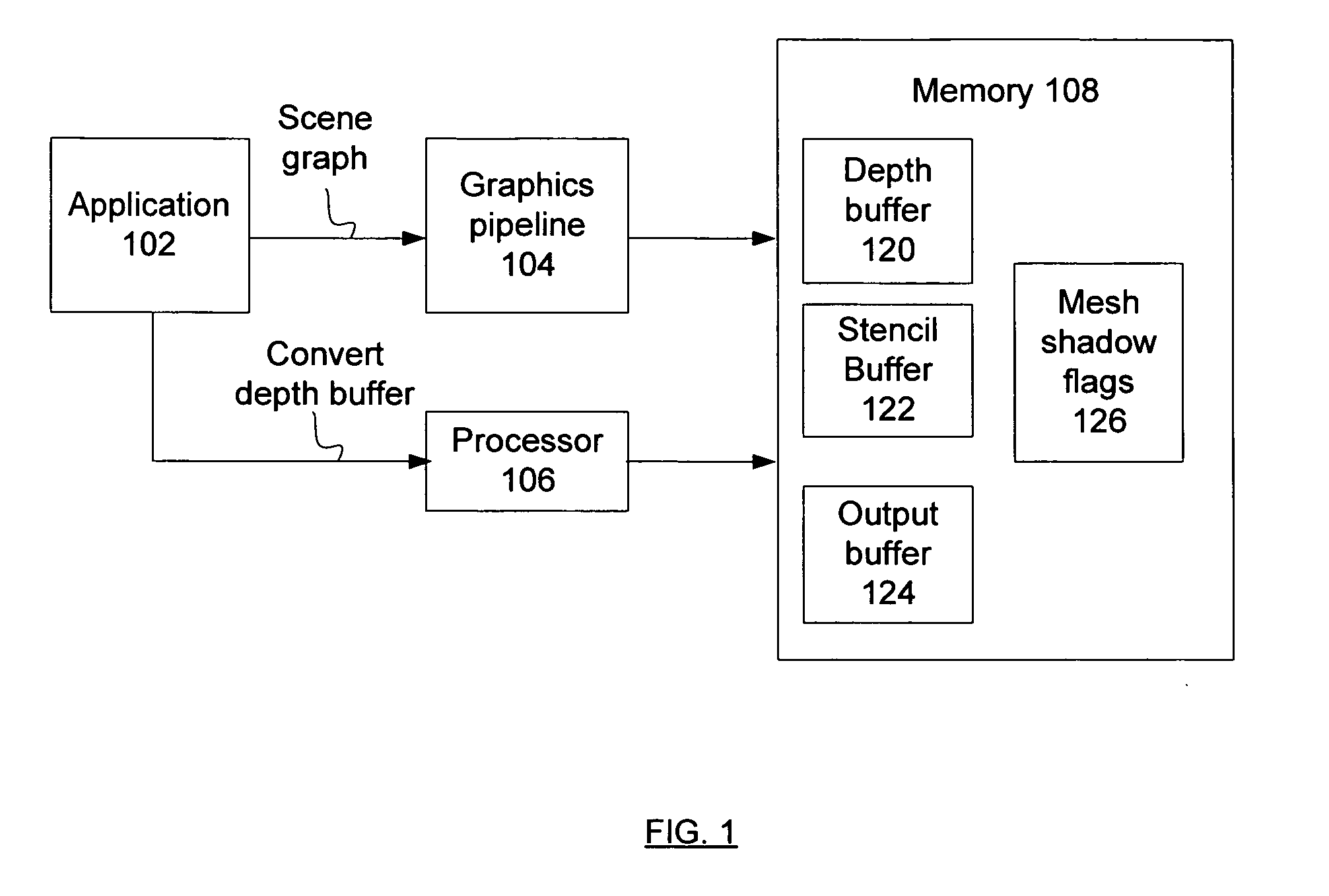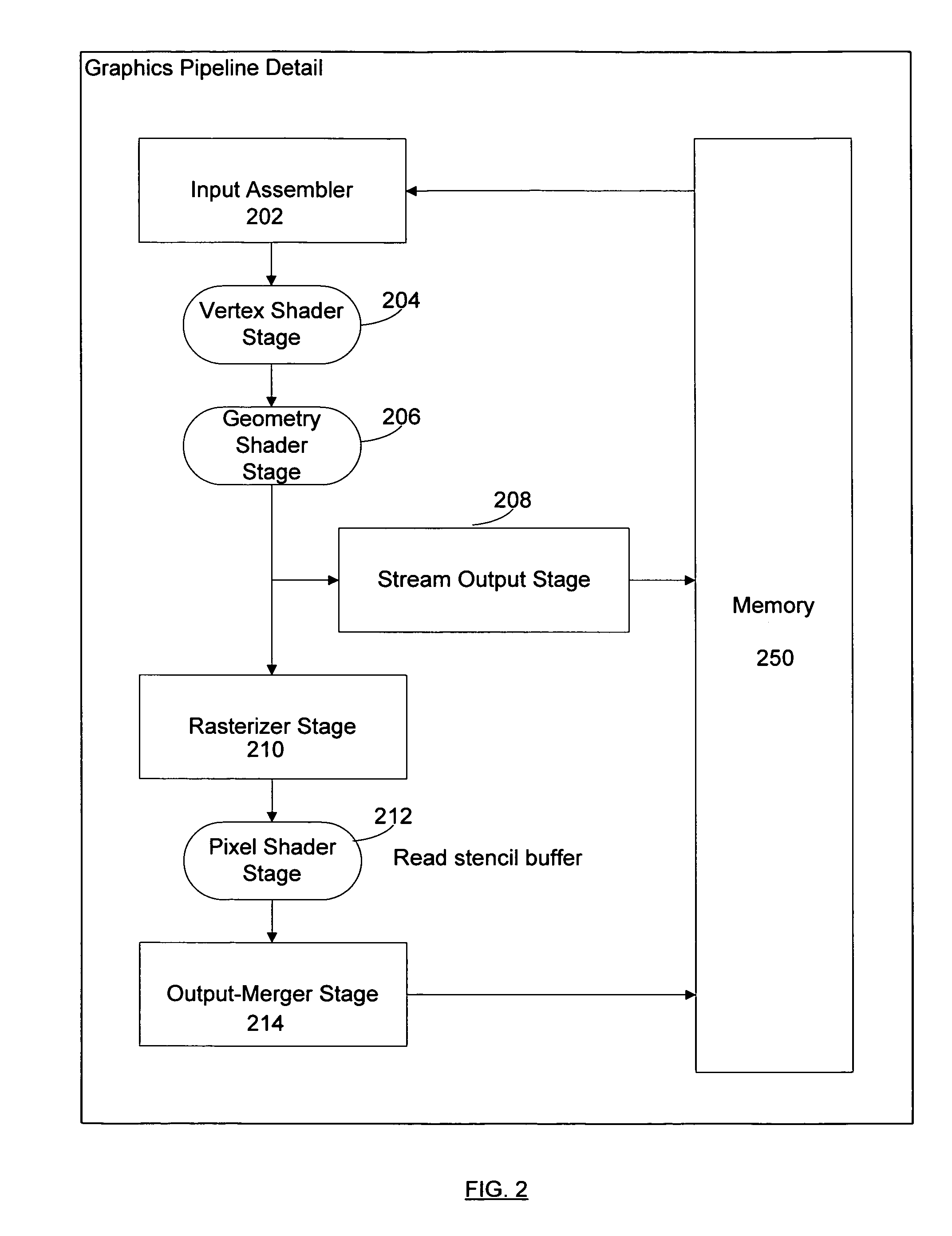Image processing techniques
a technology of image processing and image, applied in the field of graphic processing, can solve the problems of affecting the effect of character's shadow and the affecting the effect of character's shadow and corresponding light-view depth value, and relatively expensive vertex processing used to render the character's triangle,
- Summary
- Abstract
- Description
- Claims
- Application Information
AI Technical Summary
Problems solved by technology
Method used
Image
Examples
Embodiment Construction
[0013]Reference throughout this specification to “one embodiment” or “an embodiment” means that a particular feature, structure, or characteristic described in connection with the embodiment is included in at least one embodiment of the present invention. Thus, the appearances of the phrase “in one embodiment” or “an embodiment” in various places throughout this specification are not necessarily all referring to the same embodiment. Furthermore, the particular features, structures, or characteristics may be combined in one or more embodiments.
[0014]Various embodiments enable hierarchical culling during shadow generation by using a stencil buffer generated from a light view of the eye-view depth buffer. The stencil buffer may be generated by projecting depth values in a standard plane of a camera view onto a light-view image plane. The stencil buffer is from a light view and indicates points or regions in the eye view that could potentially be in shadow. If nothing is between a point...
PUM
 Login to View More
Login to View More Abstract
Description
Claims
Application Information
 Login to View More
Login to View More - R&D
- Intellectual Property
- Life Sciences
- Materials
- Tech Scout
- Unparalleled Data Quality
- Higher Quality Content
- 60% Fewer Hallucinations
Browse by: Latest US Patents, China's latest patents, Technical Efficacy Thesaurus, Application Domain, Technology Topic, Popular Technical Reports.
© 2025 PatSnap. All rights reserved.Legal|Privacy policy|Modern Slavery Act Transparency Statement|Sitemap|About US| Contact US: help@patsnap.com



